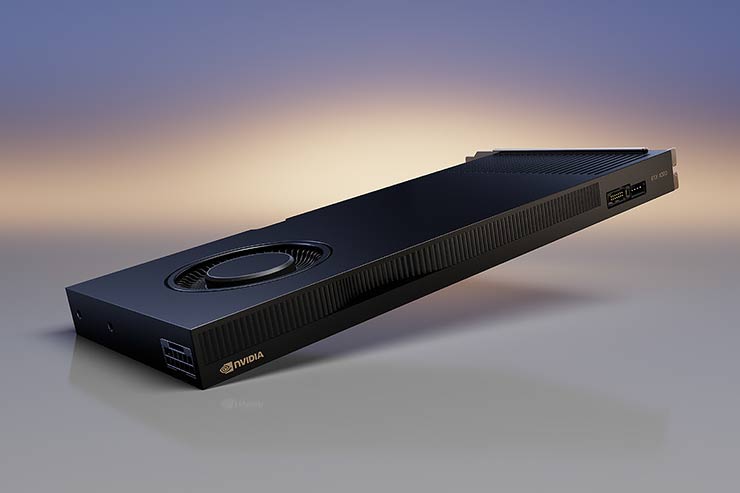The portfolio is enriched Akamai of cloud solutions with NVIDIA RTX 4000 Ada Generation, a GPU-based product optimized for M&E companies. The new cloud-based service provides better level of productivity and convenience for companies that need to process video content more quickly and efficiently.
Scalable and resilient architectures
Evaluations conducted by Akamai demonstrated that GPU-based encoding with the NVIDIA RTX 4000 processes 25x faster frames per second (FPS) than traditional CPU-based encoding and transcoding methods. A solution that offers a significant improvement to the way streaming service providers address typical workload challenges. Thanks to Akamai’s solution, Media & Entertainment companies can create scalable and resilient architectures, implementing workloads more quickly, reliably and manageably.
What are the advantages
Shawn Michels, Vice President of Cloud Products di Akamai
Media companies need one latency reduced and reliable computing resources. This is to maintain the portability of the workloads created. NVIDIA GPUs deliver performance higher level when deployed into Akamai’s global Edge platform. Together with our Qualified Compute Partners and with our open platform, we offer our customers the ability to design their next-generation workloads cloud-independently. As well as supporting multicloud architectures.
Optimized GPUs needed
In a market hyper-focused on using NVIDIA GPUs to support a large language model, the Akamai GPU for Media Service focuses on an industry that needs more solutions economical of the current ones. Drawing on its knowledge and industry experience, Akamai has optimized its new GPU solution to meet the demanding specific requirements of the media industry.
The Akamai portfolio is growing
The NVIDIA RTX 4000 GPU reaches the levels of speed and power needed to tackle the demanding creation, design and engineering workflows for digital content creation operations. To which are added those for 3D modeling, rendering, inferencing and streaming of video content.
Industry-specific use cases
Transcoding e streaming video live. GPUs can transcode live video streams anymore quickly compared to reality. This improves the streaming experience by reducing buffering and even playback. While GPU-based encoding improves efficiency and reduces processing time compared to traditional CPU-based transcoding.
The Akamai portfolio is enriched with a new solution for the M&E sector
Day GPU NVIDIA RTX 4000 It is equipped with the latest generation NVIDIA NVENC and NVDEC hardware devices, which offer additional capacity to simultaneously perform encoding and decoding operations. This capability is critical for applications that require high-throughput video processing, such as live streaming. 8th generation NVENC engines provide support for the latest video codecs. Including the highly efficient AV1 codec, which delivers higher quality video at lower bitrates.
Virtual reality (VR) and augmented reality (AR) content). VR and AR applications require rendering of 3D graphics and multimedia content in real time. GPUs are ideal for processing such content.
Also ideal for training, and not only that, the Akamai portfolio is enriched
While Akamai has optimized the solution for the media industry, this product is also suitable for developers and businesses looking to create apps for use in other industries. Between these:
Generative Artificial Intelligence and Machine Learning (Gen AI/ML). One of the primary applications of GPU-based cloud computing is in generative AI/ML. GPUs are ideal for tasks like training and inference with neural networks, as they can perform many calculations in parallel. This allows for faster and more efficient training of new models, which can lead to a better level of accuracy and performance. The NVIDIA RTX 4000 GPU reinforces the NVIDIA Ada Lovelace architecture to provide excellent performance in inferencing tasks. A total of 192 4th generation Tensor Cores accelerate multiple data types. It also includes a new Fine-Grained Structured Sparsity feature that allows you to achieve a throughput 4x more for tensor matrix operations than the previous generation. The addition of 20GB of GDDR6 memory provides expanded capacity for large datasets and models.
More speed in analysis activities
Data analysis and scientific computing. GPU-based cloud computing is also commonly used in data analytics. As well as in scientific computing due to the nature of its operations, which often require large processing amount of data. These operations are expensive time-consuming and require a lot of calculations. GPUs can help accelerate these operations by processing large amounts of data in parallel, which speeds up and makes analysis and simulation tasks more efficient.
Gaming and graphics rendering. GPUs are widely used in the gaming industry. Especially for graphics rendering and other tasks related to video game development.
HPC (High-Performance Computing). GPU-based cloud computing is commonly used in HPC applications. Such as, for example, modeling and simulation, which require fast and efficient processing of large amounts of data. GPUs can also be used to accelerate simulations, calculations, and other compute-intensive tasks.
Many steps forward
Shawn Michels, Vice President of Cloud Products di Akamai
To support a wide range of workloads, numerous computing instances are needed. What we are doing with industry-optimized GPUs is one of many steps forward we are taking for our customers. This allows you to increase the range of computing applications across the entire continuum to promote and enhance native edge applications.
